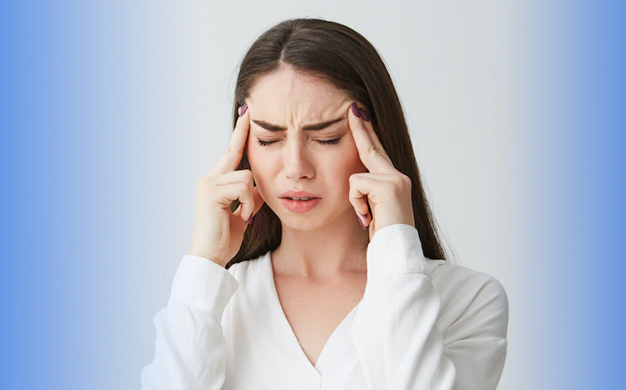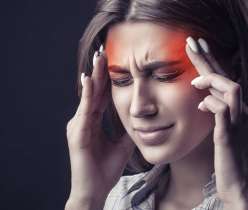Migraine headache is a common clinical problem characterized by multiphase attacks of head pain and a myriad of neurological symptoms. This article will help you better understand the symptoms and how to control them. Whatever there are and improve your quality of life.
How common is migraine?
Migraine is caused when certain chemicals are produced around the brain’s arteries. These chemicals make the vessels become enlarged, and the increase in the volume of blood circulates in a squeezing effect on the brain. This increased pressure causes swelling of the walls of the blood vessels, which causes migraine pain.
Migraine is a lifelong condition. It may begin in childhood and disappear and reappear in new forms throughout a person’s life. In general, as patients mature, there is a decrease in intensity and an increase in the incidence of atypical migraine symptoms (ear pain, bowel syndrome, vertigo, etc.). Migraine is heredity; the neurological disorder tends to run in families, so having a blood relative with migraine increases your chance of getting the condition. It is considered as common as diabetes and asthma control. The frequency with which migraine occurs may vary from once in a lifetime to almost daily. Consult your doctor to get the best migraine treatment.
General symptoms of migraine
Generally, migraine appears as a slow pain and then continues to progress as a continuous pulsating pain near the temples or at the front or back of the one side of the head. However migraine headaches can be experienced on both sides of the head, but their prevalence is low. It is generally associated with nausea, vomiting, and light and sound sensitivity. An individual with migraine headaches prefers to stay in a dark room and a quiet relaxing place. In most cases, the head pain is relieved after vomiting. Many people suffering from migraines may get two to four attacks per month. However, this varies among patients, ranging from an attack every few days, or only one or two episodes a year.
Types of migraine
Migraine is classified according to the symptoms they cause. They are symptoms specific to each type and are usually known by the part of the body they affect. The two main types are migraine with aura and migraine without aura.
- Migraine with aura: Aura is a visual disturbance that affects approximately 20% of people with migraine. It is defined as a neurological disturbance that appears with hallucinations, random flashes of light, zigzag features of light, blind spots, and photophobia (sensitivity to light). It generally begins five to thirty minutes before actual head pain begins. Aura is a warning sign that a migraine is about to start. It makes the person see a glow around objects or at the margin of the vision area. In addition, patients may experience blurred vision and difficulty focusing.
- Migraine without aura: Migraine without aura is the most common type. It appears with symptoms similar to migraine with aurae, such as nausea, vomiting, and sensitivity to light and noise, but does not present with aura.
A migraine headache generally develops due to genetics or certain environmental factors. The exact cause of migraine is still not known. However, health care experts believe that they are associated with the enlargement of blood vessels and the production of specific chemicals which triggers headache. Serotonin and dopamine are two chemicals associated with migraine headaches. These chemicals are found in the brain and control the blood vessels to act normally, except when they are released in normal concentration. Pain regulation in the nervous system is controlled by serotonin. Thus, there is a reduction of the chemical during migraine episodes. Different triggers can cause migraine. These triggers are different for different people. Common ones include:
-
- Foods: Certain foods can trigger a migraine attack. These include chocolate, aged cheese, nuts, and aspartame. Certain chemicals in food, such as monosodium glutamate used in Asian foods, caffeine, and alcohol, especially red wine and beer, are possible culprits. Fasting or missing a meal may increase the chance of attacks.
-
- Stress: Increased levels of emotional or physical stress might trigger the onset of migraine headaches.
-
- Sleeping pattern: Changes in sleeping patterns such as inadequate or excessive sleep may trigger a migraine attack.
-
- Medication: Certain medications can intensify migraine episodes. At the end of the contraceptive pill, women may experience migraine due to the cessation of metabolism of estrogen components in the pills. Migraine treatment can be pharmaceutical and non-pharmaceutical. Different medicines are specifically designed to cure migraine headaches. However, some medications formulated from other conditions can also relieve or prevent migraine. You can buy anti-migraine medicine online at the lowest price. Choose a reliable source to buy migraine medicine online. Consult your physician before you buy migraine tablets or capsules to treat your chronic headaches.
Pain relieving and preventive medications are available for migraine patients. It is recommended to take pain-relieving drugs as the symptoms of migraine occurs. Preventive medications can decrease migraine headaches’ duration, recurrence, and severity. Buy the best medicine for migraine.




